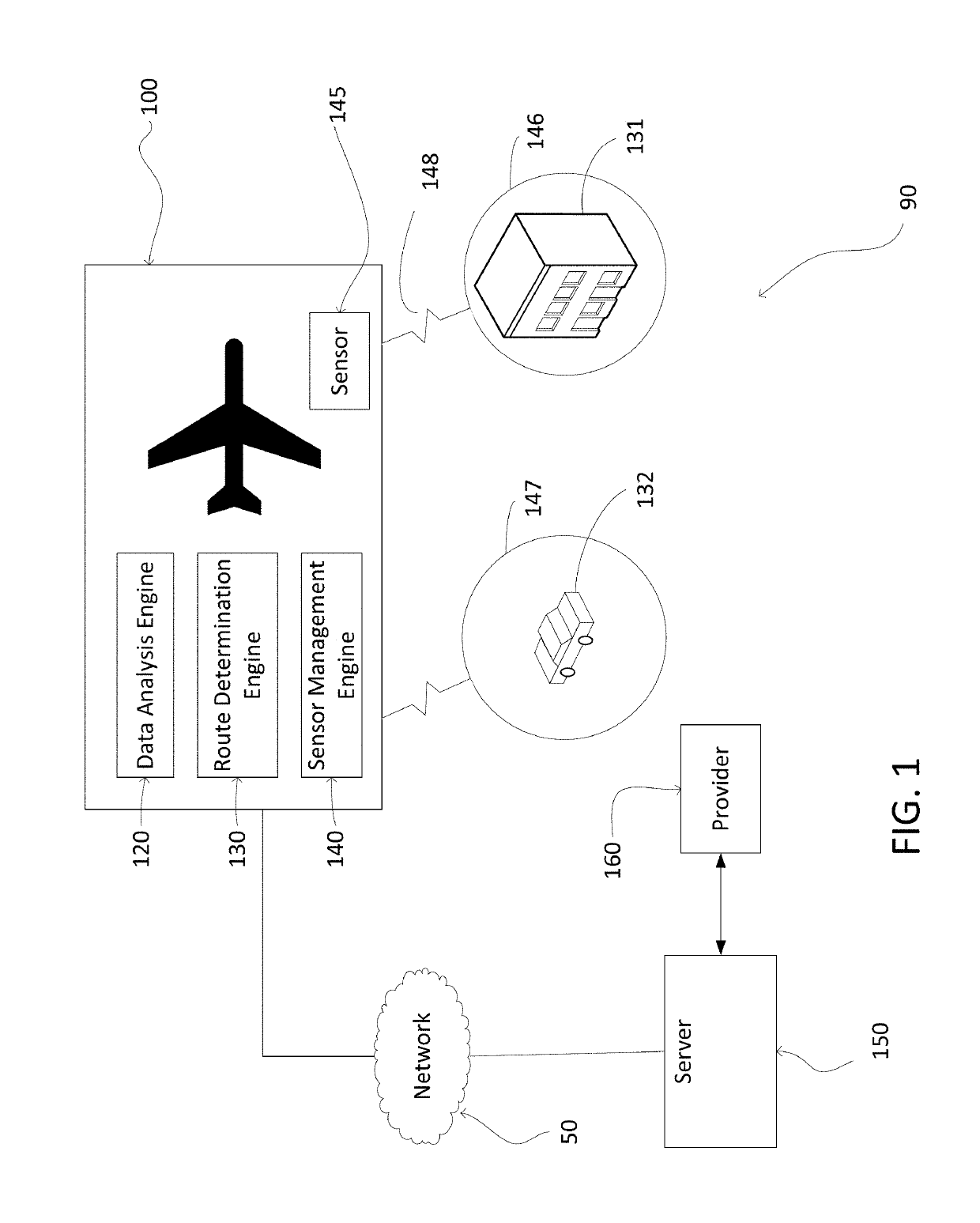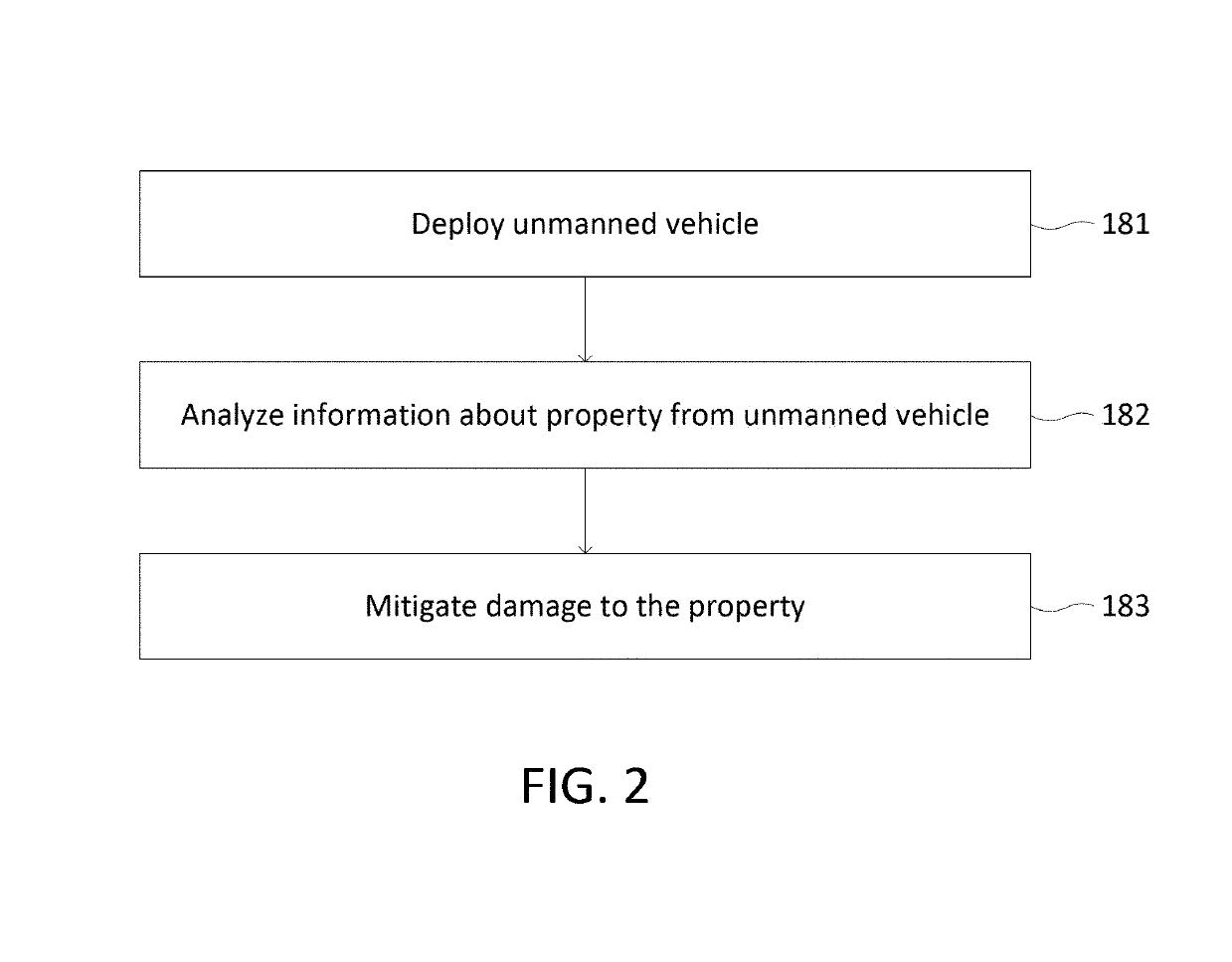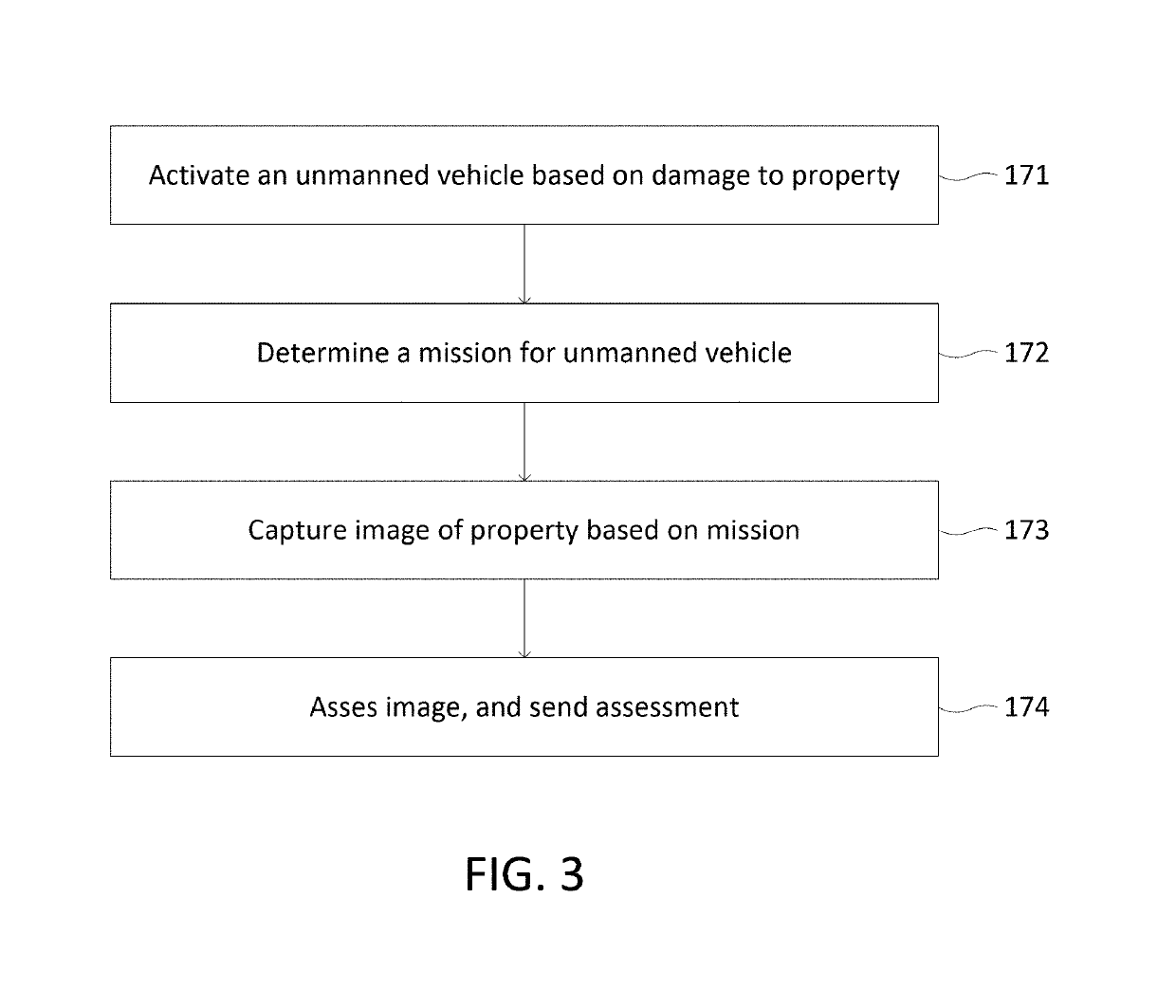Remote sensing of structure damage
a technology of remote sensing and damage, applied in the field of remote sensing of damage, can solve problems such as lethally wounding a potential enemy combatant, and achieve the effects of improving the triage process, improving the estimation of material quantities needed, and improving processes
- Summary
- Abstract
- Description
- Claims
- Application Information
AI Technical Summary
Benefits of technology
Problems solved by technology
Method used
Image
Examples
Embodiment Construction
[0026]Unmanned vehicles may be used to survey a property in response to or in anticipation of damage to the property. For example, an unmanned vehicle may analyze information about the property and based on the information determine the state (e.g., damage) of the property. This disclosure relates at least in part to identifying how unmanned vehicles may facilitate delivery of a service, such as claims processing.
[0027]FIG. 1 illustrates an exemplary system 90 associated with unmanned vehicle surveillance of a property. Unmanned vehicle 100 includes sensor 145, data analysis engine 120, route determination engine 130, and sensor management engine 140. Unmanned vehicle 100 may be communicatively connected with network 50 and server 150. A business (e.g., an insurance provider) may own or have control of unmanned vehicle 100, network 50, or server 150. Structure 131 (e.g., a commercial building or home) is located in area 146 and vehicle 132 (e.g., an automobile, motorcycle, or boat) ...
PUM
 Login to View More
Login to View More Abstract
Description
Claims
Application Information
 Login to View More
Login to View More - R&D
- Intellectual Property
- Life Sciences
- Materials
- Tech Scout
- Unparalleled Data Quality
- Higher Quality Content
- 60% Fewer Hallucinations
Browse by: Latest US Patents, China's latest patents, Technical Efficacy Thesaurus, Application Domain, Technology Topic, Popular Technical Reports.
© 2025 PatSnap. All rights reserved.Legal|Privacy policy|Modern Slavery Act Transparency Statement|Sitemap|About US| Contact US: help@patsnap.com



